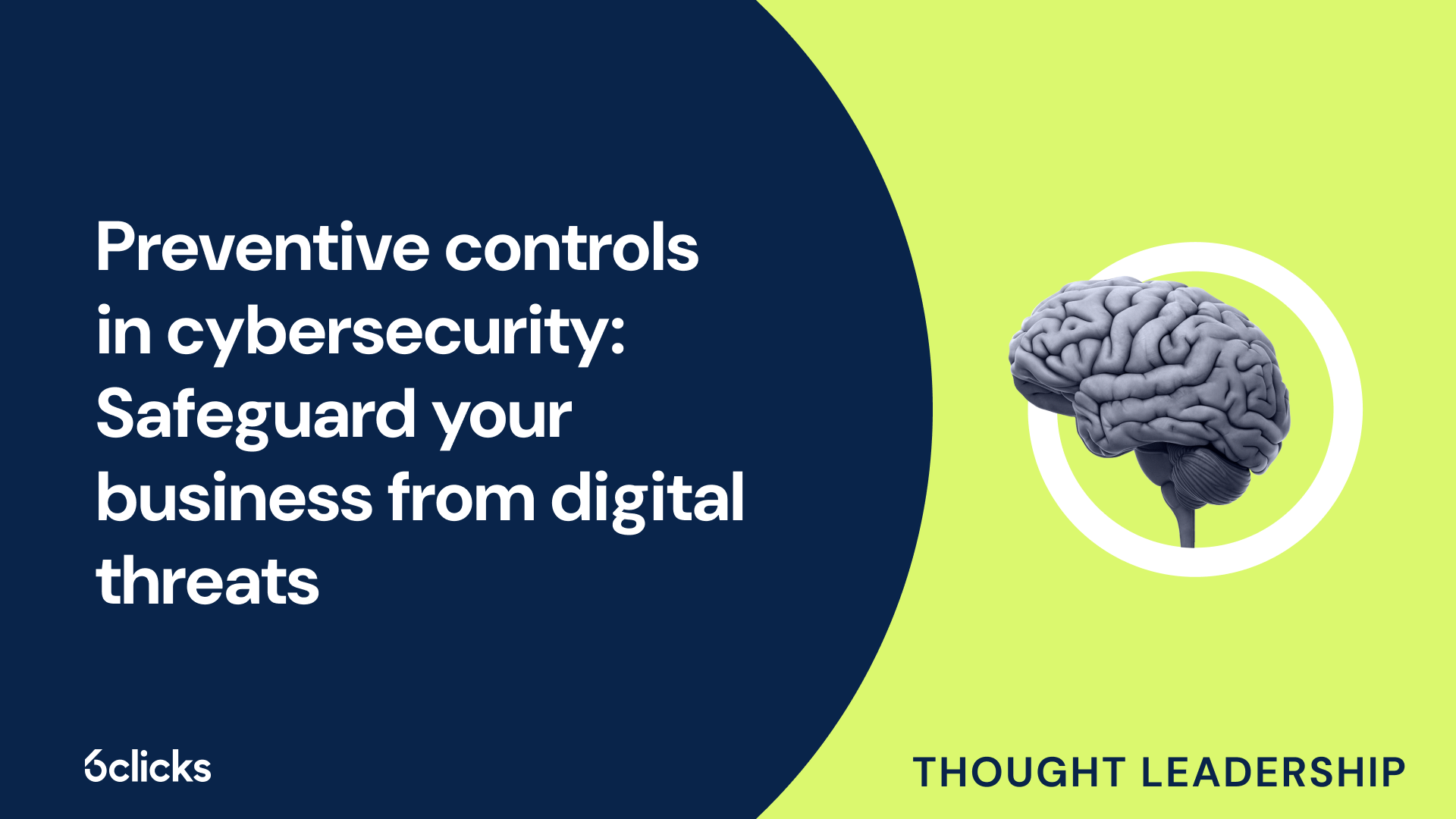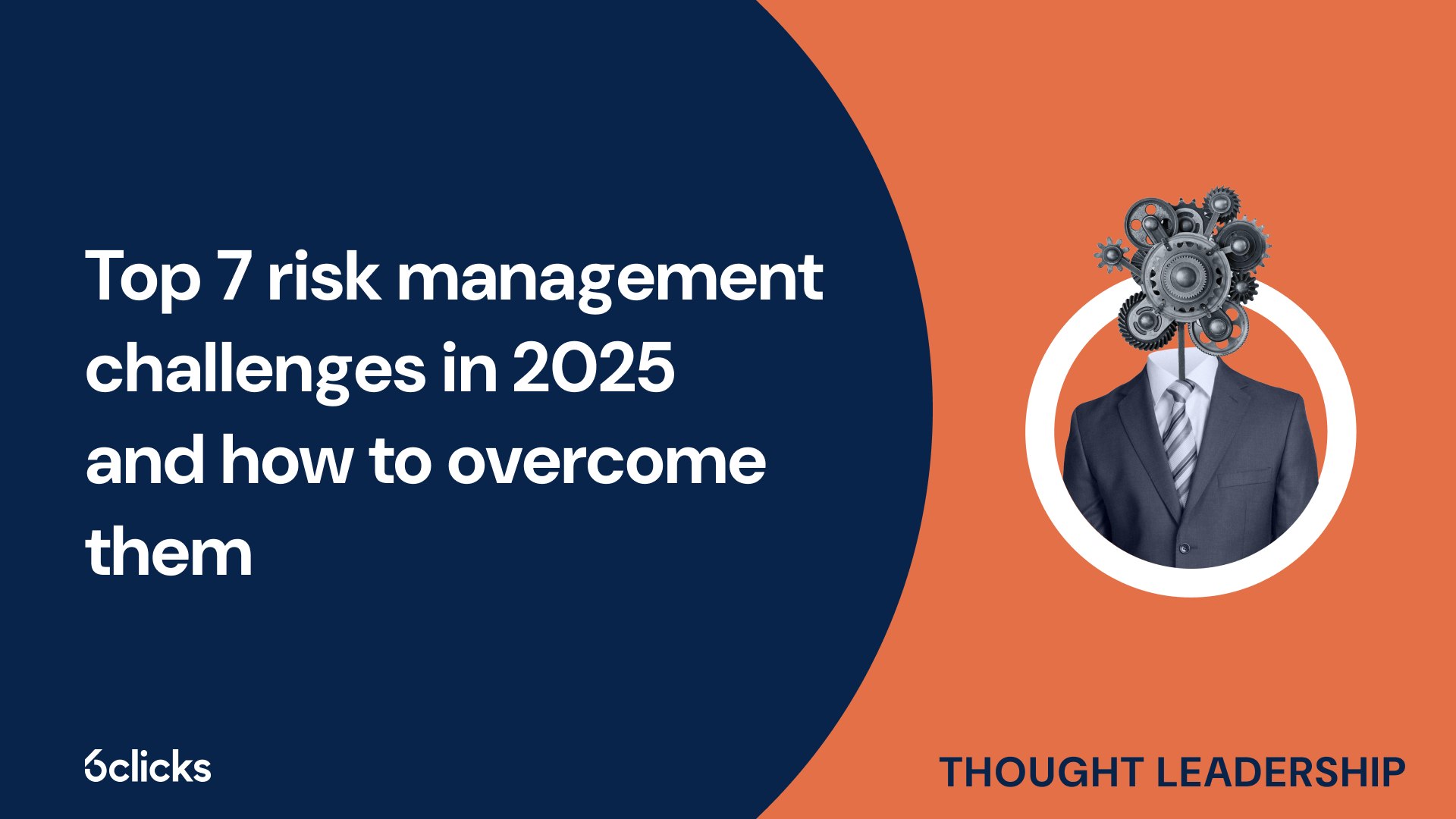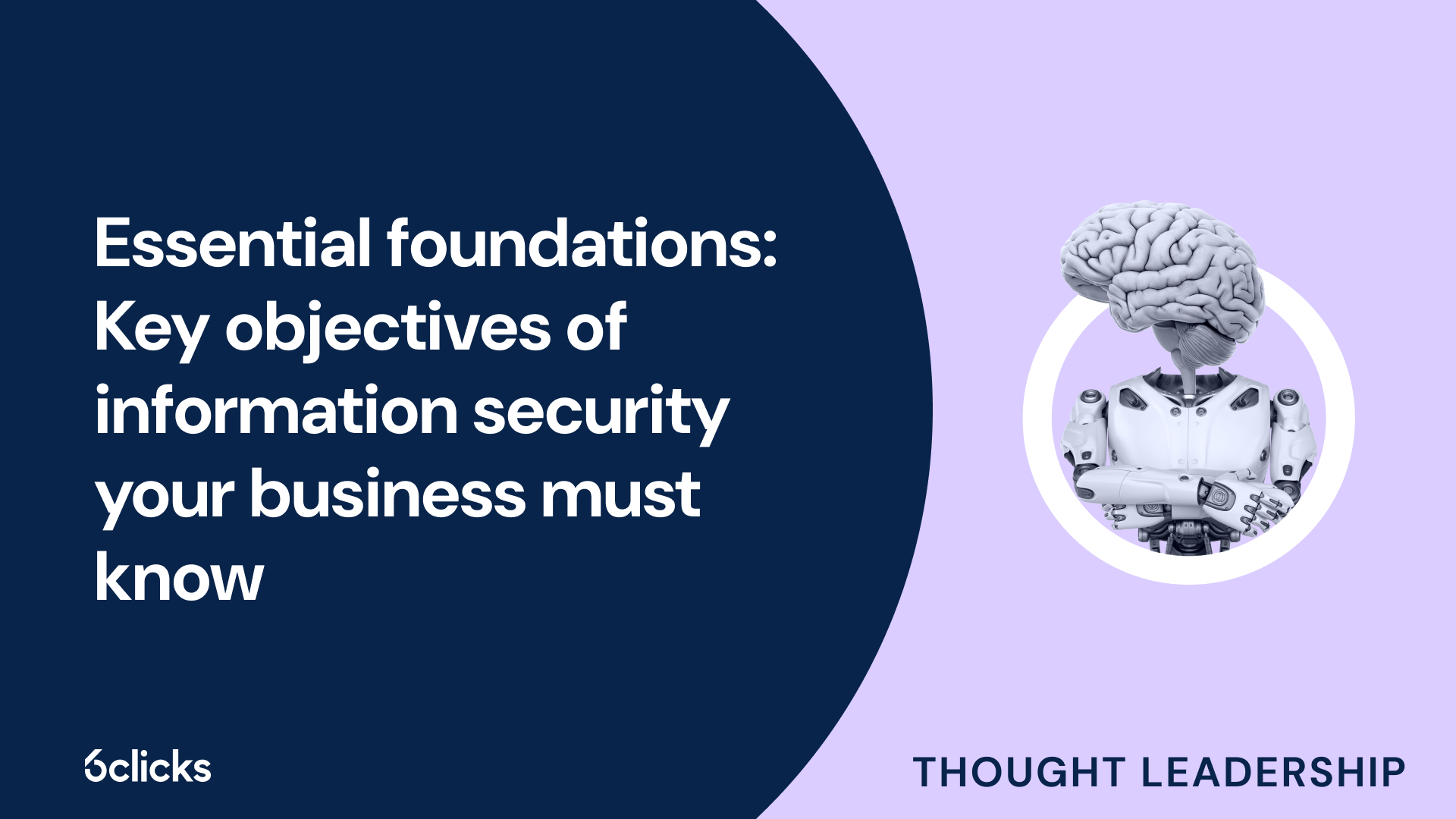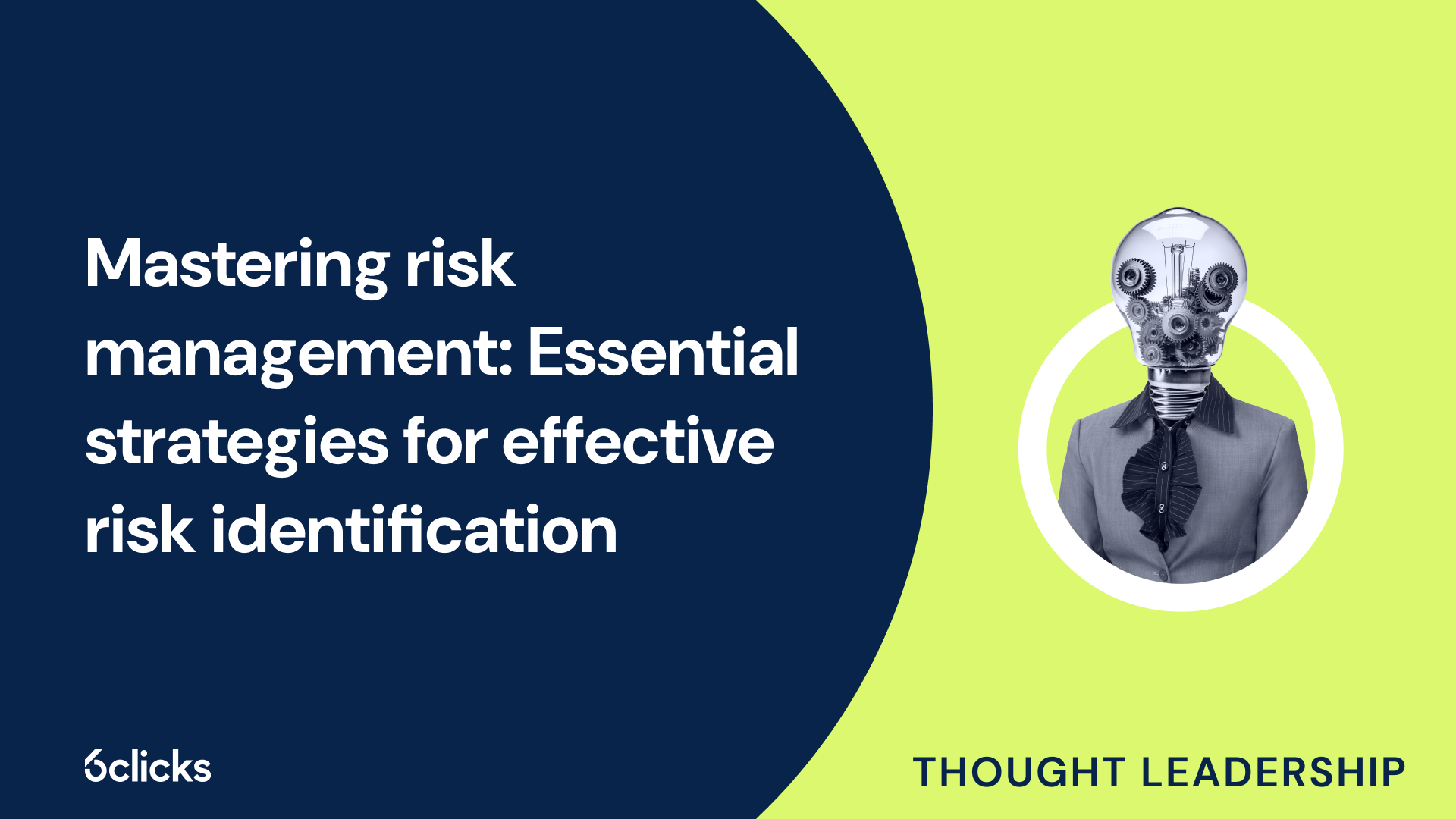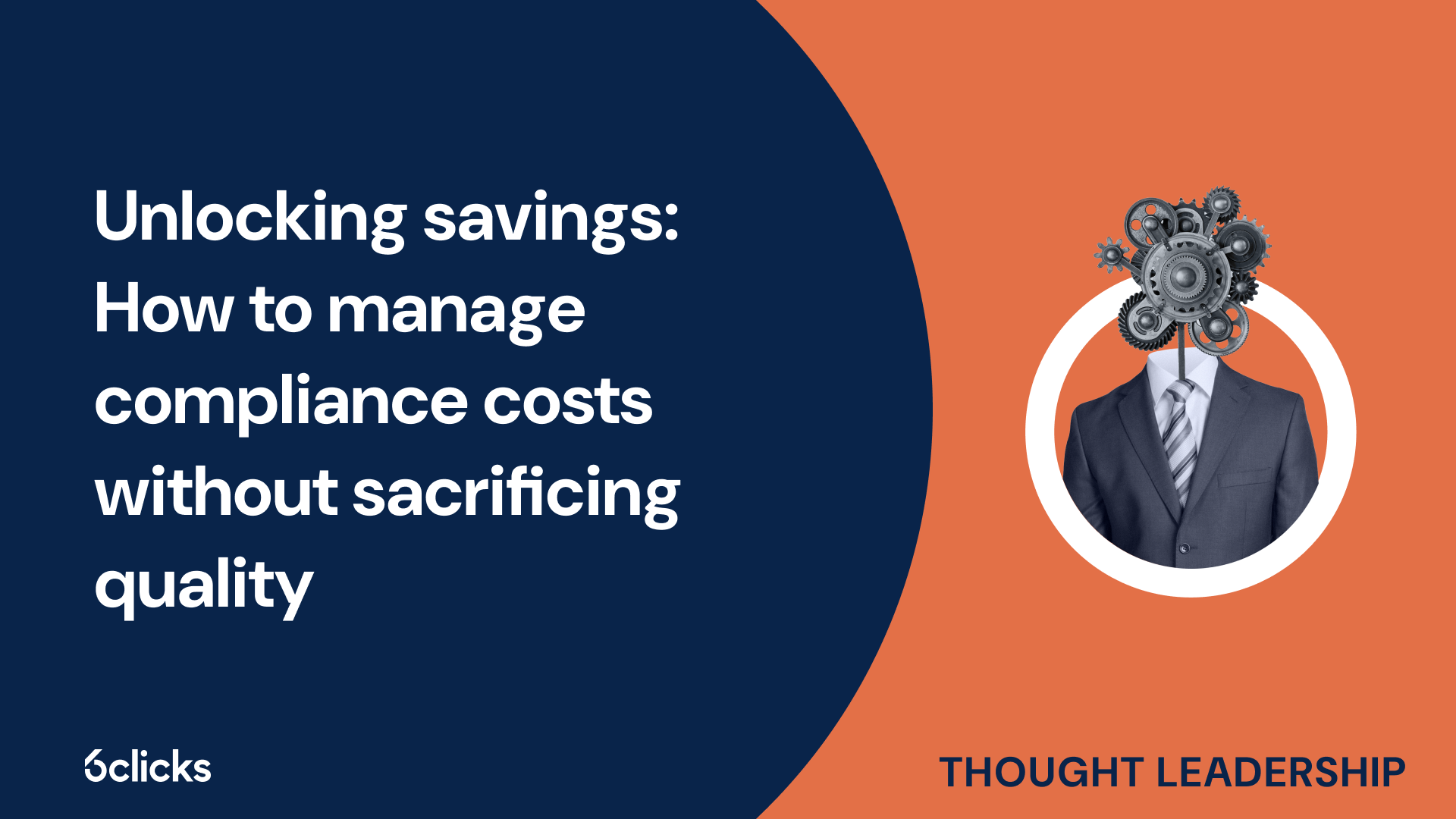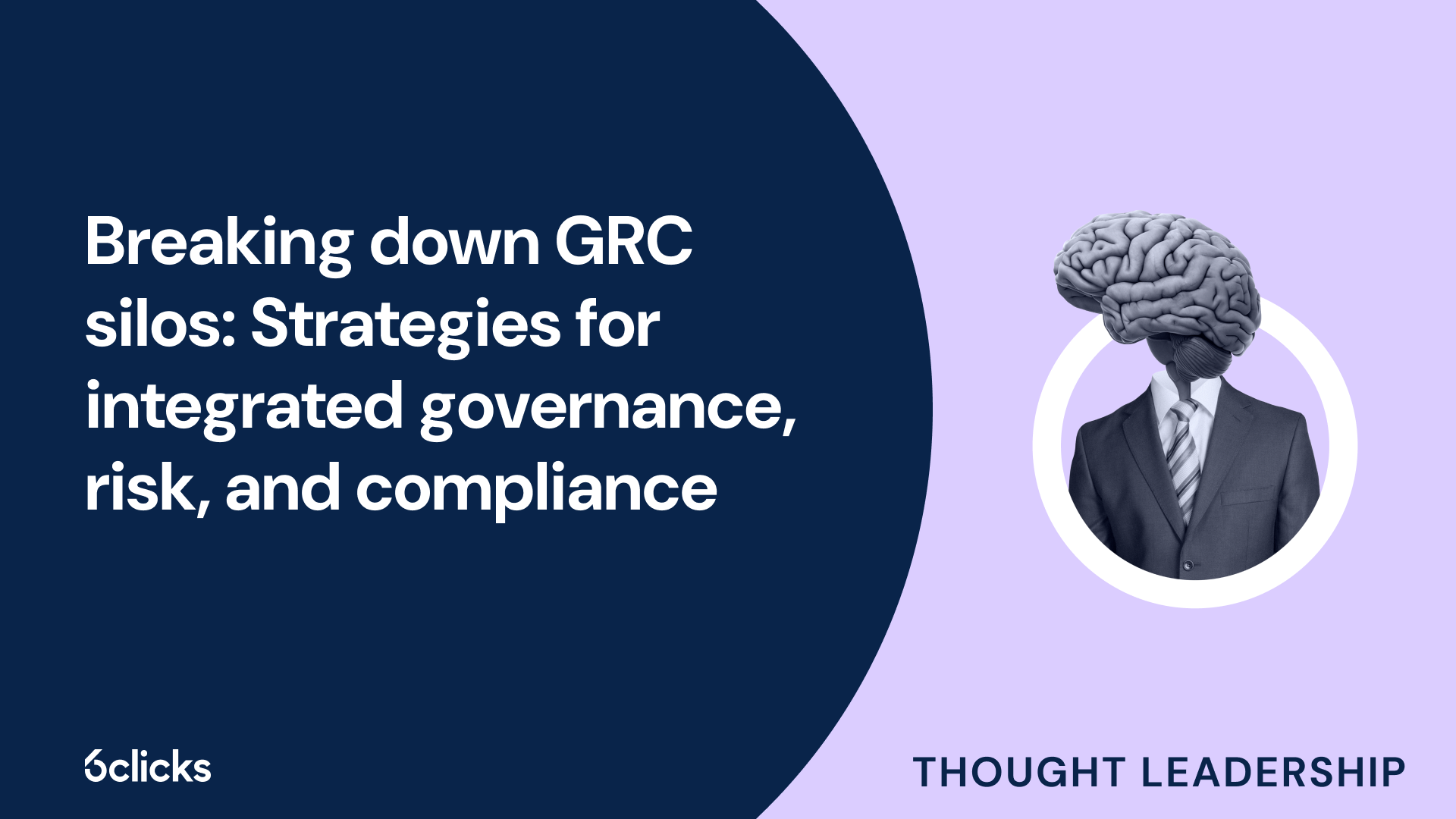The GRC buyer’s guide for 2025: Building resilience with AI-powered, federated solutions
Discover the ultimate GRC buyer's guide for 2025! Uncover how AI-powered, federated solutions transform compliance and security management for industries like government, aerospace, banking, and more. Learn about centralized control, continuous compliance, and advanced cyber GRC capabilities. Download now!
-1.png?width=200&height=249&name=Group%20193%20(1)-1.png)
The GRC buyer’s guide for 2025: Building resilience with AI-powered, federated solutions
What is SOC 2?
SOC 2, or Service Organization Control 2, is an auditing standard established by the American Institute of Certified Public Accountants (AICPA) that focuses on the security, availability, processing integrity, privacy, and confidentiality of customer data that is stored and processed in the cloud. It is not a legal requirement but rather a voluntary framework that organizations can adopt to demonstrate their commitment to data security and privacy. SOC 2 reports provide assurance to customers and stakeholders that an organization has implemented strong security controls and safeguards to protect their sensitive information. The report is typically used by organizations that provide services to other businesses, such as cloud service providers, data centers, software as a service (SaaS) companies, and managed IT service providers. By obtaining a SOC 2 report, these organizations can gain a competitive advantage by demonstrating their compliance with industry-recognized standards and attracting potential customers who prioritize data security. It also helps them establish trust with existing customers and strengthen their business partnerships.
Is SOC 2 legally required?
While SOC 2 certification is not legally required, it has become a prevalent and often mandatory contractual requirement for B2B and SaaS vendors. SOC 2, which stands for Service Organization Control 2, is an auditing framework developed by the American Institute of Certified Public Accountants (AICPA) to assess a service provider's security, availability, processing integrity, confidentiality, and privacy policies and procedures.
Although there is no legal obligation to obtain SOC 2 certification, many businesses in the B2B and SaaS industries choose to pursue it. SOC 2 certification provides a competitive advantage by demonstrating a commitment to security and trust to potential customers, partners, and investors. It helps build credibility and confidence in the handling of sensitive customer data and minimizes the risks associated with data breaches and security incidents.
Achieving SOC 2 compliance involves implementing stringent internal controls, security standards, and processing integrity principles. It requires a thorough audit process conducted by independent auditors or CPA firms. The certification process includes a readiness assessment, compliance reports, and an audit report that covers the service organization's compliance program, business practices, financial controls, and privacy principles.
Overview of the SOC 2 standard
The SOC 2 standard is a framework developed by the American Institute of Certified Public Accountants (AICPA) to assess and evaluate the controls and processes in place for service organizations. While not legally required, many businesses choose to pursue SOC 2 certification to demonstrate their commitment to security, reliability, and privacy to their clients and stakeholders. SOC 2 focuses on five trust service categories: security, availability, processing integrity, confidentiality, and privacy. The certification process involves a thorough audit conducted by independent auditors or CPA firms, assessing the organization's controls and practices against the trust service principles. By achieving SOC 2 compliance, businesses can showcase their dedication to meeting industry-recognized standards and gain a competitive advantage in the market. This certification assures potential customers that their sensitive data is secure and that the service organization consistently follows best practices to protect against security risks and incidents.
Who develops the SOC 2 standard?
The SOC 2 (Service Organization Control 2) standard was developed by the American Institute of Certified Public Accountants (AICPA), a professional organization representing certified public accountants, in response to the increasing need for organizations to ensure the secure handling of customer data. The AICPA recognized the growing importance of information security as the Internet gained popularity and more businesses began relying on technology for storing and processing sensitive customer information.
The SOC 2 standard was created to help organizations establish and maintain effective controls and processes for securing customer data. It sets forth a framework for assessing and reporting on the security, availability, processing integrity, confidentiality, and privacy of customer data within service organizations. By adhering to the SOC 2 standard, businesses can demonstrate their commitment to protecting customer data and provide assurance to potential customers, business partners, and other stakeholders that they have implemented appropriate security measures.
The AICPA played a crucial role in establishing the SOC 2 standard as a trusted framework for auditing and certifying organizations. It worked closely with industry experts, regulators, and organizations to develop the standard, incorporating best practices and industry-accepted security standards into its requirements. As a result, SOC 2 compliance has become a recognized benchmark for information security in various industries, providing organizations with a competitive advantage and enhancing customer trust.
What does the SOC 2 standard require?
The SOC 2 standard is a set of requirements that organizations must meet to effectively manage customer data. It is built on the concept of Trust Services Categories, which include security, availability, processing integrity, confidentiality, and privacy.
In terms of security, the SOC 2 standard requires organizations to have robust logical and physical access controls to protect customer data. This involves implementing measures such as two-factor authentication, encryption, and intrusion detection systems. Organizations must also have proper system operations and change management processes in place to ensure the ongoing security of customer data. Risk mitigation procedures, including regular risk assessments and security incident response plans, are also key components of SOC 2 compliance.
The availability criterion focuses on ensuring that customer data is accessible and functional when needed. This requires organizations to have redundant systems and backup plans to mitigate potential system failures or interruptions. They must also have a comprehensive business continuity and disaster recovery plan to minimize downtime and maintain service availability.
Processing integrity entails the accurate and timely processing of customer data. SOC 2 compliance requires organizations to have strong internal controls in place that ensure the completeness, accuracy, and validity of data processing. This includes monitoring data input and output, as well as conducting regular data reconciliations.
Confidentiality involves protecting sensitive customer data from unauthorized access or disclosure. Organizations must have appropriate data classification and handling procedures, as well as secure transmission and storage protocols. It is also essential to have clear policies and agreements in place with service providers who handle customer data.
Lastly, the privacy criterion focuses on the proper collection, use, retention, and disposal of customer data in accordance with applicable privacy laws and regulations. Organizations must have a comprehensive privacy program in place that includes privacy policies, privacy notices, and procedures for handling privacy complaints and breaches.
By meeting these requirements, organizations can demonstrate their commitment to managing customer data correctly, ensuring its security, availability, processing integrity, confidentiality, and privacy.
Are there different types of SOC 2 reports?
A Type I report evaluates the suitability and design of controls at a specific point in time. It provides an independent assessment of whether the organization's controls are designed effectively to meet the specified criteria of the SOC 2 framework. This report is useful for organizations that want to demonstrate their commitment to security and compliance to potential customers or business partners.
On the other hand, a Type II report goes beyond the design of controls and also assesses the operating effectiveness of controls over a defined period of time, typically six to 12 months. This report not only verifies that controls are in place but also evaluates whether they are consistently applied and working effectively to achieve the defined trust services criteria.
Both types of reports have their own purposes and benefits. A Type I report establishes the foundation for trust and can be used to demonstrate the organization's commitment to security practices and policies. It is often requested by potential customers or business partners as part of the due diligence process.
A Type II report, on the other hand, provides a deeper level of assurance as it evaluates the actual implementation and effectiveness of controls over a period of time. This report is valuable for organizations that need to demonstrate ongoing compliance and risk management practices.
The auditing and reporting process for both types of reports involve a thorough examination of the organization's controls, policies, and procedures. Independent auditors assess the controls against the specific trust services criteria outlined in the SOC 2 framework. The auditors then issue a report that includes their findings, conclusions, and any identified areas for improvement.
Benefits of compliance with the SOC 2 standard
Compliance with the SOC 2 standard offers several key benefits for organizations. Firstly, it provides a competitive advantage by demonstrating to potential customers and business partners that the organization has implemented strong security practices and policies. This can help build trust and attract new clients. Secondly, compliance with SOC 2 helps organizations identify and mitigate security risks by thoroughly evaluating their controls and procedures. This allows businesses to strengthen their security program and protect sensitive customer information, intellectual property, and financial controls from potential system abuse or security incidents. Additionally, SOC 2 compliance provides a framework for organizations to continuously assess and improve their security posture, ensuring ongoing compliance and risk management practices. Overall, compliance with the SOC 2 standard helps organizations not only meet legal requirements but also establishes them as responsible custodians of their customers' data and enhances their reputation in the marketplace.
How Do organizations benefit from implementing a SOC 2 certification?
Organizations benefit greatly from implementing a SOC 2 certification. SOC 2, which stands for Service Organization Control 2, is a widely recognized auditing standard designed to assess the effectiveness of an organization's systems and processes. By obtaining a SOC 2 certification, organizations can gain several advantages.
Firstly, SOC 2 certification provides assurance to customers and stakeholders. It demonstrates that an organization's systems and processes align with the trust principles of security, availability, processing integrity, confidentiality, and privacy. This assurance is crucial in today's digital landscape, where the security and privacy of sensitive customer information are paramount.
Secondly, SOC 2 certification enhances an organization's reputation. It signals to potential customers that the organization has implemented robust security measures and is committed to protecting their data. This increased level of trust can translate into a competitive advantage, as customers are more likely to choose a SOC 2 certified organization over its competitors.
Furthermore, SOC 2 certification helps organizations demonstrate compliance with industry standards. It verifies that the organization has implemented appropriate controls and safeguards to protect sensitive information and mitigate security risks. This compliance can be crucial in industries where regulations and compliance requirements are stringent.
How do customers benefit from an organization having a valid SOC 2 certification?
Customers benefit greatly from an organization having a valid SOC 2 certification. This certification demonstrates the organization's commitment to data security and privacy by adhering to strict industry standards. By implementing robust security measures, a SOC 2 certified organization ensures that customer data is protected from unauthorized access, breaches, and potential system abuses.
The SOC 2 certification provides customers with the assurance that their sensitive information is being handled securely and with the utmost confidentiality. It validates that the organization has implemented comprehensive controls and safeguards to mitigate security risks and protect customer data from potential breaches. This assurance is crucial in today's digital landscape, where the threat of cyberattacks and data breaches is prevalent.
SOC 2 certification also offers customers a competitive advantage. Organizations that are SOC 2 certified have a higher level of trust and credibility among potential customers. Prospective clients are more likely to choose a SOC 2 certified organization, knowing that their data will be handled securely and in compliance with industry standards. This certification serves as a testament to the organization's commitment to data security, privacy, and maintaining customer trust.
Preparing for a successful auditing process
Preparing for a successful auditing process is crucial for organizations seeking SOC 2 certification. This process involves evaluating and implementing security policies and controls, conducting a readiness assessment to identify any gaps or weaknesses, and ensuring compliance with the trust service principles. Organizations must establish strong internal controls, including the implementation of multi-factor authentication, intrusion detection systems, and secure cloud storage. They should also have a comprehensive security program in place to address potential system abuse and respond effectively to security incidents. Additionally, organizations should establish strong business practices and partner with reputable service providers who also prioritize data security and compliance. By taking these steps, organizations can demonstrate their commitment to maintaining the highest level of security and privacy for their customers' sensitive information and position themselves for a successful SOC 2 audit process.
What steps can organizations take to prepare for a successful auditing process?
Preparing for a successful auditing process is essential for organizations seeking to maintain trust and compliance with industry standards. Here are some steps that organizations can take to ensure a smooth and successful auditing process.
- Audit Readiness Assessment: Before the audit begins, organizations should conduct a thorough audit readiness assessment. This assessment helps identify any gaps or weaknesses in the organization's internal controls, security policies, and compliance program. By addressing these areas beforehand, organizations can be better prepared for the audit.
- Select an Experienced Audit Firm: Choosing the right audit firm is crucial for a successful auditing process. Organizations should select an experienced audit firm that specializes in their industry and has a deep understanding of the relevant compliance requirements. An experienced audit firm will ensure that the audit process is conducted effectively and efficiently.
- Good Communication: Establishing open and transparent communication with the auditors is critical. Organizations should provide the auditors with all the necessary documentation, access to systems, and any other information required for the audit. Regular communication throughout the auditing process helps address any potential issues or questions promptly.
By following these steps, organizations can ensure that they are well-prepared for the auditing process, enhancing their chances of a successful audit and achieving compliance with industry standards.
What is involved in an audit readiness assessment?
An audit readiness assessment is a crucial process that helps organizations prepare for an audit by evaluating their security and compliance programs. It involves several key steps to ensure the organization is prepared and meets the necessary requirements.
Firstly, the assessment involves collecting and organizing all relevant documentation and information that the auditor may require during the audit process. This includes security policies, procedures, risk assessments, incident response plans, and other compliance-related documents. Having this documentation readily accessible can significantly streamline the audit process and demonstrate the organization's commitment to compliance.
Secondly, working closely with the auditor is essential during the readiness assessment. Organizations should engage in open and transparent communication to understand the auditor's expectations, timelines, and audit scope. This collaboration helps align the organization's efforts and priorities with the auditor's requirements, ensuring a more efficient and successful audit process.
Additionally, the readiness assessment allows organizations to identify any gaps or weaknesses in their security and compliance programs. By conducting thorough evaluations of current practices, policies, and controls, organizations can proactively address these areas and strengthen their overall security posture.
Moreover, educating stakeholders about the importance of data compliance and IT security is a crucial aspect of the readiness assessment. By creating awareness and providing training to employees, management, and other relevant parties, organizations can foster a culture of compliance and ensure everyone understands their roles and responsibilities.
Engaging CPA firms and service providers to meet compliance requirements
Engaging CPA firms and service providers is a crucial step in meeting compliance requirements for SOC 2. These entities play a significant role in auditing and assessing the effectiveness of an organization's internal controls, security measures, and processing integrity.
When selecting a certified public accounting (CPA) firm, it is important to consider several criteria. Firstly, organizations should evaluate the firm's experience and expertise in conducting SOC 2 audits. Look for firms that have a proven track record of performing audits in your industry and have a deep understanding of the specific compliance requirements.
Additionally, organizations should assess the firm's reputation and client base. Look for references and testimonials from previous clients to ensure that the firm is reliable and has a strong commitment to maintaining confidentiality and privacy.
Moreover, auditors should have the qualifications and relevant experience to assess the organization's tech stack. This includes a solid understanding of the organization's cloud storage, data processing systems, intrusion detection, and security program. Having auditors who are familiar with the organization's tech stack helps ensure a comprehensive and accurate assessment of the security risks and compliance measures in place.
Engaging CPA firms and service providers that meet these criteria not only ensures a smooth and efficient auditing process but also provides organizations with the confidence that their compliance requirements are being met effectively. By selecting the right auditors, organizations can obtain reliable compliance reports that can be provided to potential customers, business partners, and regulatory bodies, thereby enhancing their competitive advantage.
Security policies related to the SOC2 standard
Security policies are an essential component of the SOC 2 standard. SOC 2 focuses on five trust service principles, one of which is the security principle. This principle requires organizations to have a comprehensive set of security policies and procedures in place to protect sensitive customer information, intellectual property, and other critical assets. These policies should address various security risks, such as potential system abuse and unauthorized access, and outline specific measures to mitigate these risks. By implementing robust security policies, organizations can demonstrate their commitment to ensuring the security and privacy of their clients' data and gain a competitive advantage by providing assurance to potential customers and business partners.
What security policies are necessary to meet compliance standards under the SOC2 standard?
To meet compliance standards under the SOC 2 standard, organizations are required to have various security policies in place. These policies contribute to the protection of assets and data against unauthorized use and address several key areas including logical and physical access controls, system operations, change management, and risk mitigation.
Logical access controls involve implementing measures to ensure that only authorized individuals can access systems and data. This includes the use of strong passwords, two-factor authentication, and role-based access controls. Physical access controls, on the other hand, focus on securing physical locations where data is stored or processed. This includes the use of access cards, biometric systems, and security guards.
System operations policies ensure that systems are operated securely and efficiently. This covers areas such as system monitoring, backup and recovery processes, and incident response procedures. Change management policies address how changes to systems are managed to minimize the risk of unauthorized modifications or disruptions.
Lastly, risk mitigation policies help organizations identify and mitigate potential risks to their systems and data. This involves conducting risk assessments, implementing security controls, and regularly reviewing and updating policies and procedures.
By having these security policies in place, organizations can demonstrate their commitment to protecting sensitive data and assets. It also allows them to meet the compliance requirements laid out in the SOC 2 standard, providing assurance to potential customers and business partners that their data is secure.


